Can Cats Suffocate Under Duvet? Pet Safety Explained
Ever wondered if your beloved feline friend can suffocate under the duvet while snuggled up for a nap? It’s a common concern among cat owners, and for good reason. While cats are known for their love of cozy spots, there are potential risks to consider when they burrow under blankets.
So, can cats actually suffocate under a duvet? Let’s uncover the truth behind this question and explore some essential pet safety tips to ensure your furry companion’s well-being during nap time.
Key Takeaways
- Cats can experience breathing issues in environments with poor air quality, so it’s important to provide them with clean air by investing in a quality cat tree.
- Heavy blankets can pose risks of suffocation, overheating, entanglement, and ingestion for cats, so it’s crucial to supervise them around blankets and provide alternative cozy spots.
- Signs of distress under blankets include wheezing, rapid breathing, lethargy, unusual purring, and loud purring, indicating difficulty breathing.
- To ensure a safe sleeping environment, remove suffocation hazards, ensure good air circulation, provide a comfortable and breathable bed or mat, regularly inspect the sleeping area for hazards, and keep the room at a comfortable temperature.
Understanding Cats’ Breathing Patterns
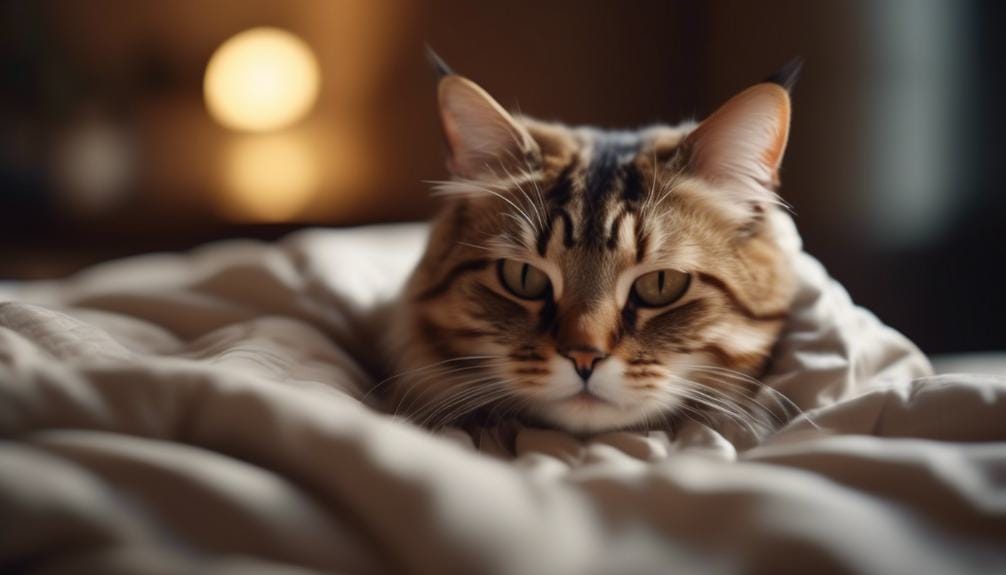
Cats breathe through their noses, which not only humidifies the air but also serves as an effective filter for detecting changes in their environment. Understanding cats’ breathing patterns is crucial for pet owners.
Cats’ unique respiratory system allows them to conserve energy for hunting silently. However, this can also lead to potential breathing issues, especially when they’re in environments with poor air quality. As a responsible pet owner, it’s important to create a healthy living space for your cat. Consider investing in a quality cat tree to provide them with elevated vantage points where the air is often cleaner.
Additionally, being aware of potential breathing problems is essential. If you notice any irregularities in your cat’s breathing, it’s crucial to seek veterinary care promptly. Understanding your cat’s breathing patterns is vital for their overall well-being and longevity.
Potential Risks of Blankets for Cats
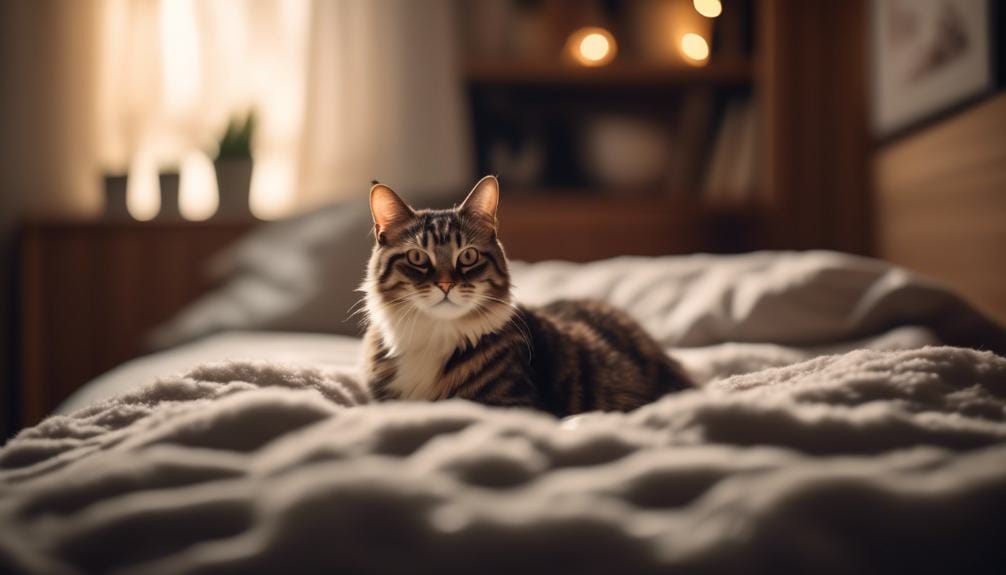
Considering the importance of understanding your cat’s breathing patterns, it’s crucial to be aware of the potential risks that blankets can pose to their safety and well-being.
When it comes to keeping your cat safe, blankets can actually present several potential risks that you should be mindful of:
- Suffocation: Cats may accidentally burrow themselves under heavy blankets and risk suffocation.
- Overheating: Thick blankets can cause cats to overheat, especially if they’re unable to move out from underneath them.
- Entanglement: Loose threads or blanket materials can pose a risk of entanglement, leading to potential injury.
- Ingestion: Cats may chew on blankets, which could lead to ingestion of fibers, potentially causing digestive issues or blockages.
To ensure your cat’s safety, always supervise them around blankets and provide alternative cozy spots.
Signs of Cat’s Distress Under Blankets
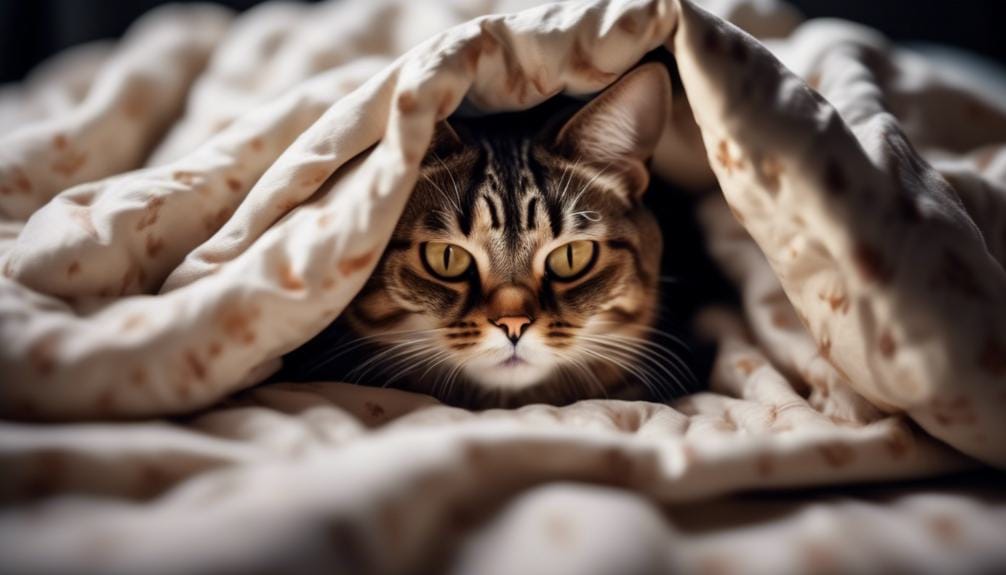
When observing your cat under a blanket, be attentive to signs of distress, such as wheezing, rapid breathing, lethargy, or unusual purring. If your cat is struggling to breathe, it may make wheezing or coughing noises under the blanket. Additionally, rapid breathing or panting when under the blanket could indicate that your cat is experiencing distress. Lethargy or weakness displayed by your cat after being under the blanket is also a cause for concern.
Furthermore, if your cat is purring loudly while under the blanket, it could be a sign of difficulty breathing. If any of these signs are observed, it’s crucial to remove the blanket immediately to ensure your cat’s safety.
Always prioritize your cat’s well-being and monitor for any distress signals when they’re under blankets.
Ensuring Safe Sleeping Environment
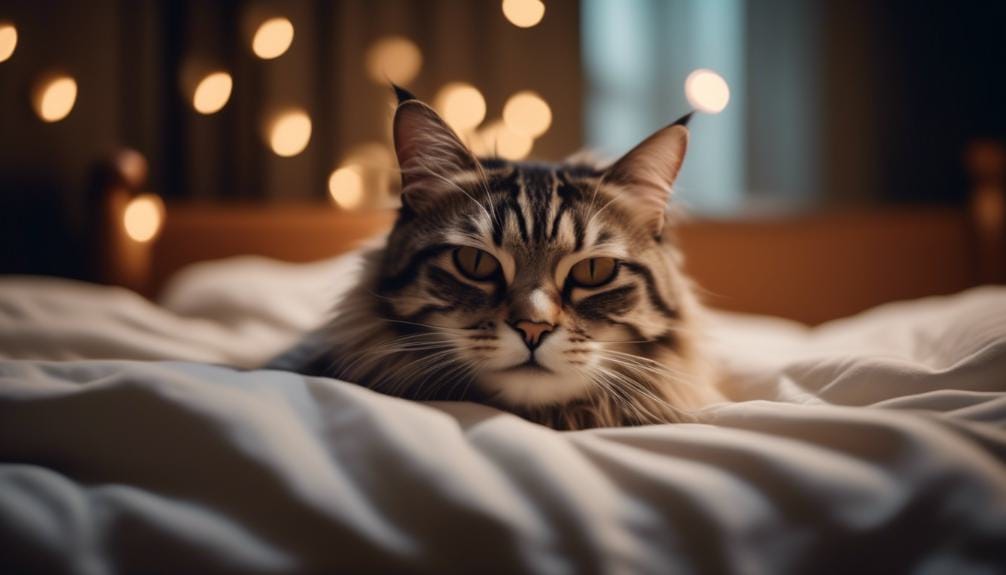
To ensure a safe sleeping environment for your cat, always make sure to remove any potential suffocation hazards such as plastic bags, tight spaces, or heavy blankets. Cats, like humans, need a safe and comfortable sleeping environment to ensure they get the rest they need.
Here are some tips to help you create a safe sleeping environment for your feline friend:
- Proper Ventilation: Ensure the room where your cat sleeps has good air circulation to support healthy breathing.
- Comfortable Bedding: Provide your cat with a comfortable and breathable bed or mat that’s free of potential entanglement hazards.
- Regular Checks: Regularly inspect your cat’s sleeping area to make sure there are no hazardous items present.
- Temperature Control: Keep the room at a comfortable temperature to promote restful and safe sleep for your cat.
Safety Tips for Cat and Blankets
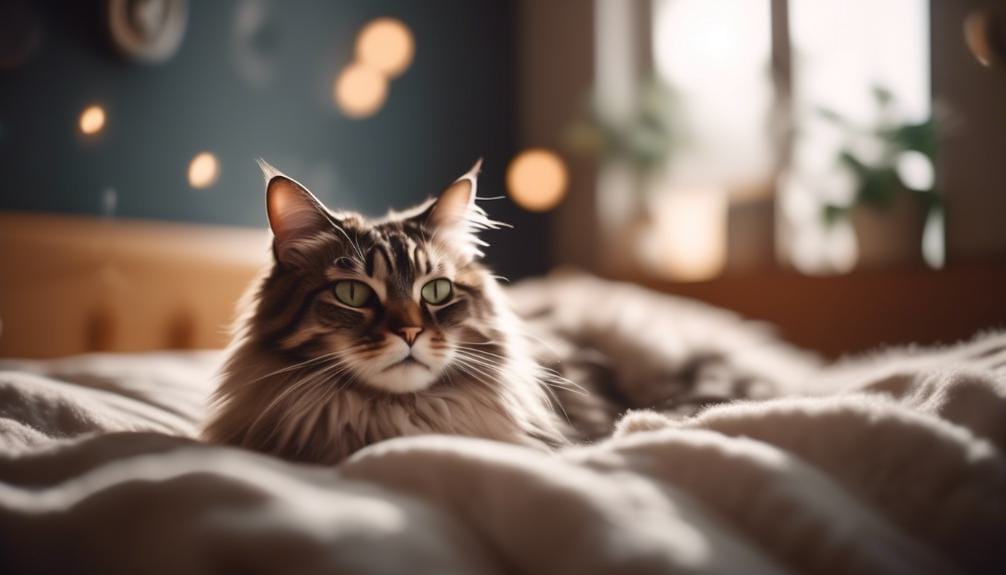
As you focus on creating a safe sleeping environment for your cat, it’s essential to also consider safety tips when it comes to cats and blankets.
Cats can regulate their breathing during sleep and will only sleep under a blanket if they’re comfortable. It’s generally okay for cats to sleep under the covers as long as they can easily come out and nothing is weighing the blanket down.
Blankets made from breathable materials with tiny holes allow air to pass through, providing oxygen for cats. While kittens may find comfort under blankets, it’s important to ensure the blanket isn’t too heavy and to check on them regularly.
Frequently Asked Questions
Can Cats Suffocate Under Duvet?
Yes, cats can potentially suffocate under a duvet if it’s too heavy or if there’s poor airflow. Ensure the duvet isn’t weighing them down and they can easily come out. Pay attention to their comfort and safety.
Why Do Cats Go Under Duvets?
Cats go under duvets for comfort, warmth, and security. It’s a natural behavior for them to seek out cozy, enclosed spaces. Providing a designated spot for them to curl up under the covers can make them feel safe and content.
Can Cats Breathe Through Pillowcase?
Yes, cats can breathe through a pillowcase as long as it’s made of breathable material. Ensure it’s non-toxic and inspect for hazards. Cats may enjoy the secure feeling, but offer alternative sleeping options for choice.
Is It OK to Let My Cat Sleep in My Bed?
Yes, it’s okay for your cat to sleep in your bed as long as it doesn’t cause any discomfort or disturbance. Providing a cozy spot for your cat to sleep can strengthen the bond between you and your pet.
Conclusion
In conclusion, while it’s rare for cats to suffocate under duvets, it’s crucial to monitor their behavior and provide a safe sleeping environment.
Understanding their breathing patterns and being aware of potential risks can help ensure your cat’s safety.
By following safety tips and keeping a close eye on your furry friend, you can create a comfortable and secure sleeping space for your beloved pet.
